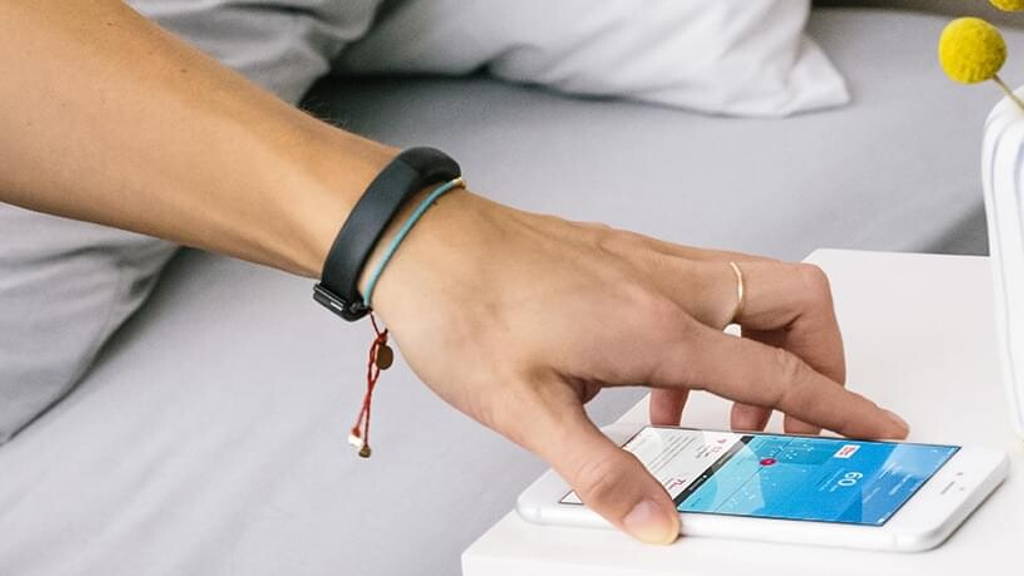Only last summer, Jawbone was all committed to building and selling new consumer wearable devices just last summer, adamantly rebutting ‘unfounded speculation’ of a looming market exit. Now, it seems that yet another famous name is exiting the consumer wearable market, not long after FitBit scooped up what remains of smartband/smartwatch developer Pebble. With even FitBit shifting focus from fitness to health applications for its fitness bands, it seems that healthcare is really the new ‘killer app’ for wearable developers.
Several previous rounds of financing are estimated to have brought in a massive total of nearly $1 billion, including $165 million last year. Yet Jawbone might be all out of funds once again. It remains to be seen investors are again willing to throw a dying brand a lifeline, facilitating one more strategy change after pursuits of glory with speakers, Bluetooth headsets and activity trackers.
Jawbone is trying to raise more money, TechCrunch states. It’s been in conversations with current backers, plus potentially new strategic investors in the wider medical sector, along with new investors outside the U.S. The company has already received some $951 million from investors such as Andreessen Horowitz, Sequoia, Kleiner Perkins, JP Morgan, Mayfield and Khosla. But it has also burned through most (if not all) of that, with very little to show in returns, as it has found it hard to make a lucrative dent in an already challenging climate for wearables.
Of course, it’s not just Jawbone that is feeling the heat. A recent report from eMarketer revised down growth estimates for the whole sector by nearly 40-percent, with many products failing to find a critical mass of users beyond early adopters; you can see the fallout also in rocky results from Fitbit (along with its recent acquisition, Pebble).
Jawbone believes that it might have an advantage. Two companies — Omada and Forward — have created interesting models that could offer Jawbone a model for a way forward, moving beyond the simplicity of consumer wrist-worn trackers. “There are a lot of things to learn about the interactions between health wellness and consumer electronics,” one source close to the company said. He added that consumer hardware is just too challenging, except for the very biggest companies.
Rumors of pivot confirmed
Rumors of a Jawbone pivot to distributing professional health products and “accompanying services” to clinicians and health care providers have been “confirmed” by an extremely reputable tech publication, with a formal announcement not far away, according to Pocketnow. It seems to be the only conceivable way out of a major financial pickle that doesn’t call for a complete hardware and software manufacturing shutdown, although it’s still going to require substantial outside investments.Several previous rounds of financing are estimated to have brought in a massive total of nearly $1 billion, including $165 million last year. Yet Jawbone might be all out of funds once again. It remains to be seen investors are again willing to throw a dying brand a lifeline, facilitating one more strategy change after pursuits of glory with speakers, Bluetooth headsets and activity trackers.
Shift to high margin healthcare business
TechCrunch also writes it has learned and confirmed that Jawbone is preparing to shift its business again — moving from a focus on low-margin fitness bands sold directly to consumers, to a high-margin business to business to consumer model: a health product and accompanying set of services sold primarily to clinicians and health providers working with patients.Jawbone is trying to raise more money, TechCrunch states. It’s been in conversations with current backers, plus potentially new strategic investors in the wider medical sector, along with new investors outside the U.S. The company has already received some $951 million from investors such as Andreessen Horowitz, Sequoia, Kleiner Perkins, JP Morgan, Mayfield and Khosla. But it has also burned through most (if not all) of that, with very little to show in returns, as it has found it hard to make a lucrative dent in an already challenging climate for wearables.
Failing to find critical mass
Jawbone has seemingly gone silent over the course of a year, a far cry from the company’s last blog post of substance, dating back to June 2016, when CEO Hosain Rahman asserted, “We’re Still Committed.” However, it turns out that Jawbone has been quietly selling off some assets, specifically part of its once-popular Jambox speaker business, as Business Insider reported in September 2016. A source tells us it is now completely gone. Its fitness bands have similarly been wound down. The last time Jawbone shipped a major upgrade to its wearable line was April 2015, with the UP4.Of course, it’s not just Jawbone that is feeling the heat. A recent report from eMarketer revised down growth estimates for the whole sector by nearly 40-percent, with many products failing to find a critical mass of users beyond early adopters; you can see the fallout also in rocky results from Fitbit (along with its recent acquisition, Pebble).
Jawbone believes that it might have an advantage. Two companies — Omada and Forward — have created interesting models that could offer Jawbone a model for a way forward, moving beyond the simplicity of consumer wrist-worn trackers. “There are a lot of things to learn about the interactions between health wellness and consumer electronics,” one source close to the company said. He added that consumer hardware is just too challenging, except for the very biggest companies.








